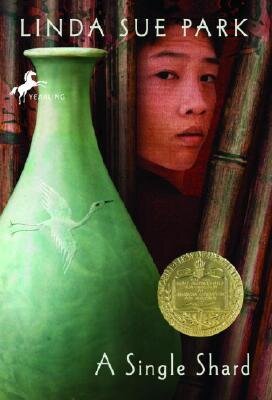Folktales are an often-overlooked facet of literature, but they encapsulate important parts of life in bite-sized pieces, making them perfect for children to enjoy and learn from.
In 5th grade literature, we recently finished reading the novel A Single Shard by Linda Sue Park. It takes place in 12th century Korea, and in the story, the main character, Tree-ear, must make an exceedingly long journey on foot to visit the royal capital. While he walks, he remembers folktales his guardian shared with him throughout his early life, and particularly recalls the scary ones about foxes. Tree-ear eventually encounters an actual fox, which is terrifying for him, until the fox just wanders off and Tree-ear realizes that it is harmless.
To accompany the novel, I decided to share a Korean folktale about a fox with with my class. In Korean folklore, the fox is usually a murderous shapeshifter who tricks many people. This story, ‘The Salt-Seller and the Fox,’ is no exception. It is about a man who encounters a fox, sees it change its shape, and then follows it to a nearby village. The man sees the fox trick a family there and try to murder their patriarch, but he stops the fox just in time. I shared the story with my class, and then we talked about why parents might want to share such a scary story with their young children.
“To punish them?” one student guessed jokingly.
“To get them to be afraid of… foxes?” another tried.
I urged them to think about what sort of bearing this story might have on real life. Certainly, it is not a realistic story, and there is not much of a reason to be afraid of a real fox. But rather, I coaxed them, think of the qualities foxes famously possess—the ones that are exaggerated in the folktale.
“Sneakiness,” one student suggested.
“Pretending to be something it’s not,” another added.
Finally, another student piped up to say, “Oh! To warn children against people who act like that.”
We continued to read A Single Shard, and arrived at the climax of the novel, which we read aloud together. I don’t want to spoil anything for somebody who hasn’t read it, so I will just say that the climax involves a dishonest character. When Tree-ear first encounters this dishonest person, he immediately perceives that the man is rude, stands too close for comfort, and has a forced, fake-looking smile. As the character was described, a student in my class shouted out, “FOX!”
The action plays out between Tree-ear and the dishonest man, and sure enough, she was right. He was a no good, sneaky fox. His interaction with Tree-ear leaves him struggling to figure out what to do next.
Of course, folktales don’t just teach us what to fear or avoid. I might not love them so much if that were the case. Stories like “East of the Sun and West of the Moon” teach us that the world is benevolent and full of people who want to help you, despite some evil folks here and there. Stories like “Fortunatus and his Purse” teach us that even if you feel foolish, you can still find happiness.
Despite their fantasy, magic, and monsters, folktales teach children timeless lessons about the real world. ‘The Salt-Seller and the Fox’ helped children in ancient Korea to discern dishonest people, and it will help my students in 2021 to do the same thing. Folktales, in all of their short simplicity and fantastical circumstances, help children become well-adjusted to reality.

